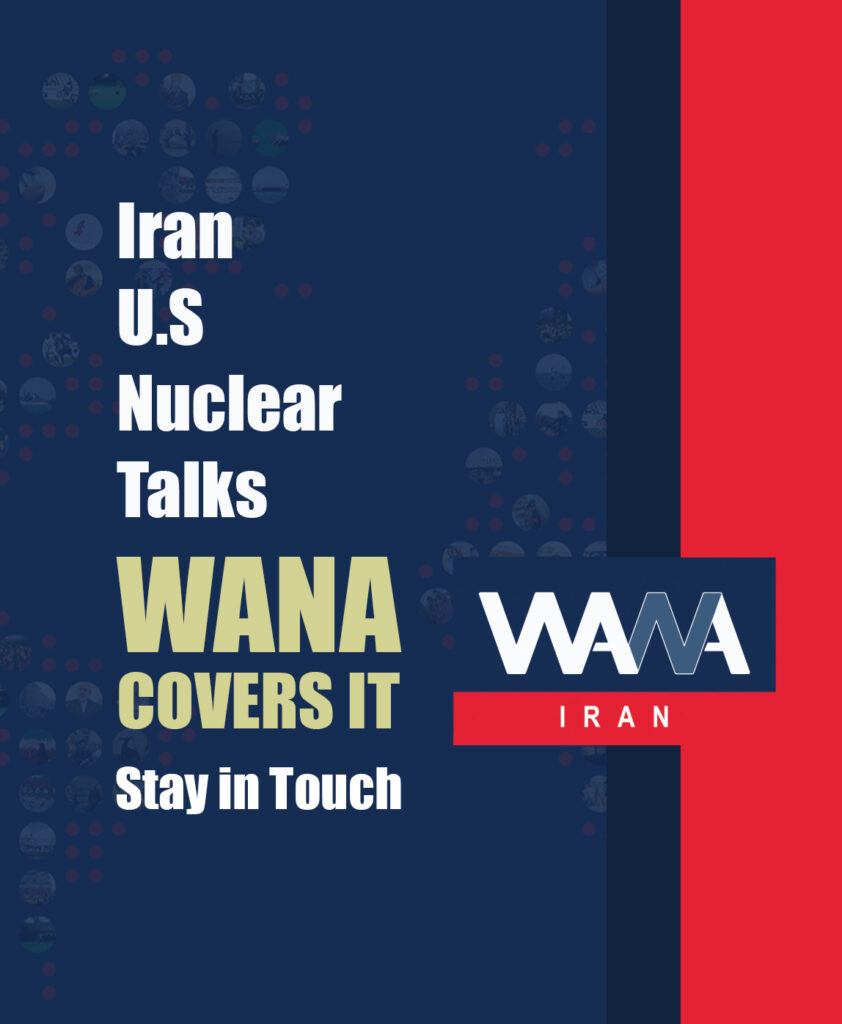Hidden Voices on Urban Walls of Iran
WANA (Aug 16) – Iran’s restricted environment has made street art an effective means of expression, providing a subversive voice that tackles subjects mainstream art and culture cannot.
From the busy streets of the capital to the ancient walls of Isfahan, Iranian street artists employ graffiti, murals, and installations to articulate ideas related to identity, liberty, and societal transformation.
Rise of the Street Art, along with protest art
Recently, Iran’s cities have turned into canvases for artistic expression. Artists like Mehdi Ghadyanloo have earned international recognition for their surreal and thought-provoking murals, which mix traditional Persian designs with modern themes.
Unlike most street artists in Tehran, Mehdi Ghadyanloo has the official backing of the city’s government and has been entrusted with transforming the dull concrete walls of the city into stunning works of art! What an incredible opportunity to witness the intersection of art and urban development in such a vibrant city.
This resurgence in street art isn’t just about beautifying urban landscapes; it’s a medium for social commentary and cultural exchange.
Another one of the leading icons of street art in Iran is not as free to work as Ghadyanloo; therefore, the identity of this artist remained unknown for a while and was called by the pseudonym “A1one. “
He is best known for his signature ‘calligraffiti’ style and is famous for depicting the repeated word for ‘truth’ (haqiqat). Drawing on traditional calligraphy, his work is steeped in Iranian cultural heritage despite being unequivocally modern.
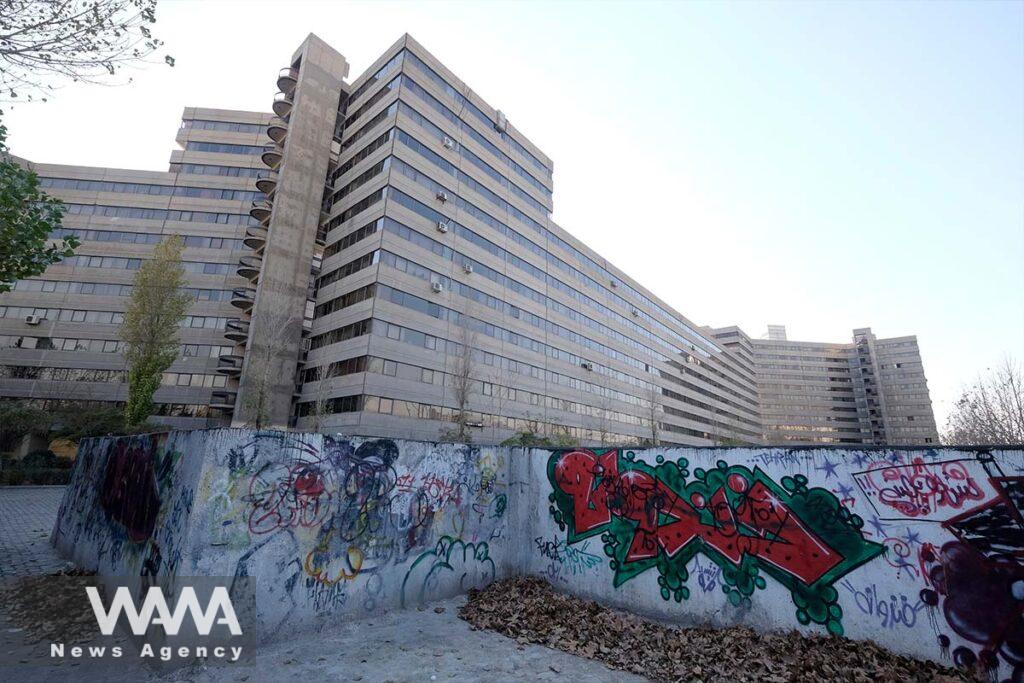
“A1one” grew up in Iran during the war and the reform era of former President Khatami. He studied at the Faculty of Art and Architecture in Tehran and began painting graffiti as a protest against students’ conditions.
Artists like “A1one” use graffiti to protest and call for change in a visually engaging manner.
By 2010, “A1one” had gained recognition as a prominent figure in Tehran’s youth culture and the development of Iranian street art.
Also, during the nationwide protests in Iran in the fall of 2022, this kind of protest art grew stronger since it was a way for young people to express themselves while staying anonymous.
The active involvement of professional artists and non-artist citizens is crucial to this movement. Every day, individuals contribute to altering the city’s visual environment by using art as self-expression.
The rise of protest art in Iran has faced opposition from the government, which viewed these forms of expression as acts of defiance.
Naturally, governmental efforts to suppress murals and expressions of dissent have continued. These efforts included regularly removing murals that physically opposed the current state of affairs.
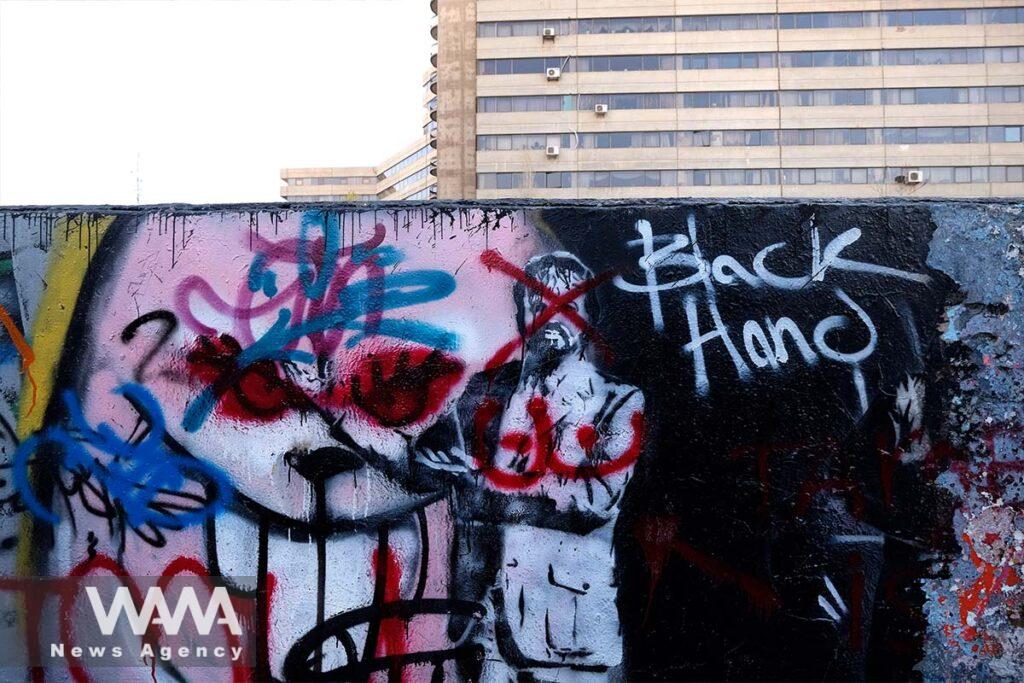
Murals, Screens of the City
Street art in Iran is not only about aesthetics but also serves as a potent tool for political expression and activism. Murals on Tehran’s Vali Asr Street tackle issues like social justice, environmental protection, and women’s rights, prompting discussions and challenging societal norms.
The beauty of street art or huge murals is that the public gets to see them every day while going to work and school. Without having to go to fancy galleries or other artistic gatherings—which, let’s face it, fewer people have time for these days—the art can serve its purpose of touching the hearts of ordinary people without them even knowing it.
Sara, a student in Tehran, was inspired by a mural depicting strong, empowered women to join a local women’s rights group. “Seeing those images daily gave me the courage to speak up and get involved,” she shares. For many young Iranians, street art is more than just visual—it’s a rallying cry for action.
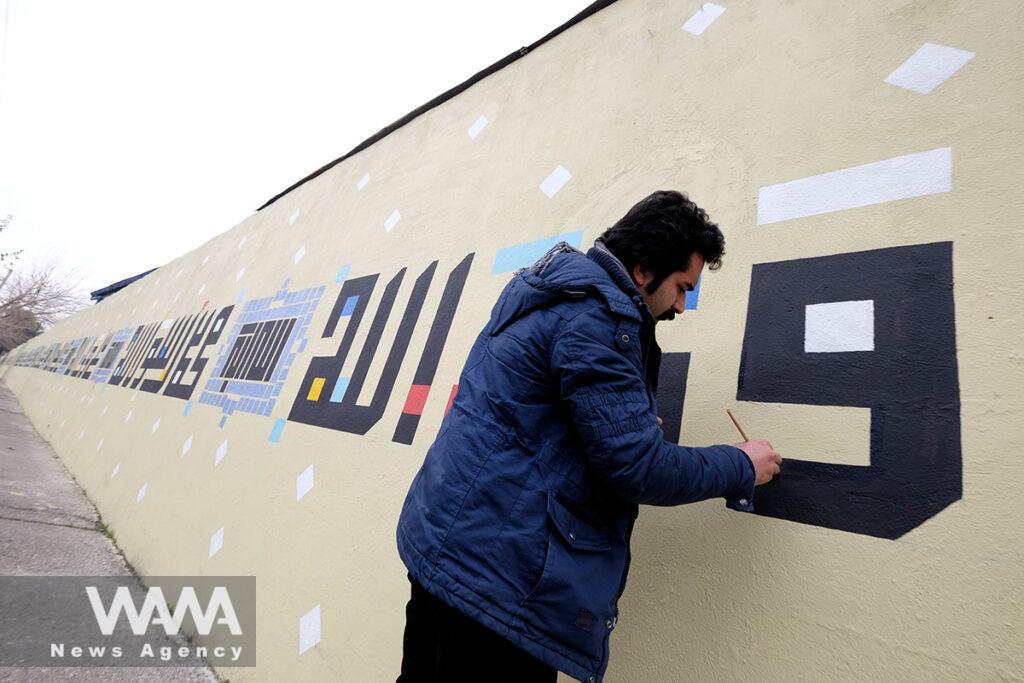
Community Empowerment
In cities like Tabriz and Mashhad, street art initiatives invite local residents to participate in mural projects, turning neglected areas into vibrant cultural spaces.
These collaborations not only beautify neighbourhoods but also empower communities to reclaim public spaces and celebrate their identities.
Ali, an artist from Tabriz, led a project where local children helped paint a mural depicting scenes from their daily lives. Spanning an entire block, the mural has become a source of community pride. “It’s amazing how a mural can bring people together and create a sense of ownership and belonging,” Ali observes.
Iran’s street art revolution represents creativity, resilience, and visual storytelling. It challenges stereotypes and invites global audiences to engage with Iranian culture.
Artists push boundaries, spark dialogue, and celebrate creativity as a universal language. Iranians share their stories with the world through art, one mural at a time.
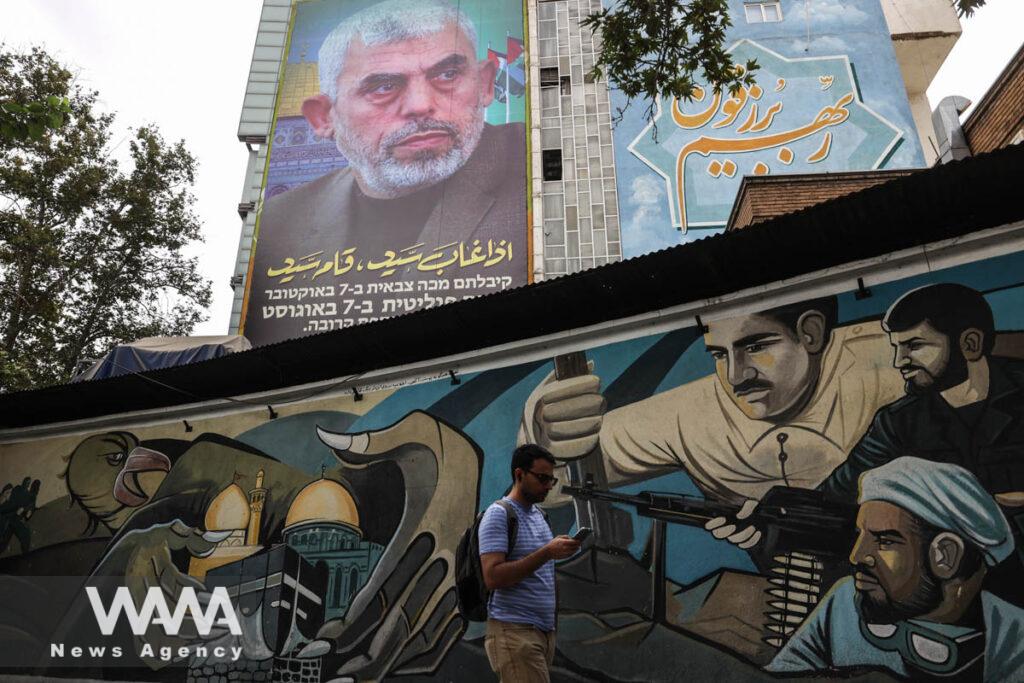
A billboard with a picture of newly appointed Hamas leader Yahya Sinwar is displayed on a building in a street in Tehran, Iran, August 12, 2024. Majid Asgaripour/WANA (West Asia News Agency)
While some individuals in Iran utilize street art to voice their protests, the government has effectively used this form of art to communicate its favourite topics.
On Karimkhan Street in Tehran, we see graffiti that may be the image by which half the world knows Tehran!
In recent years, large banners and various wall writings in Iran have been used by various media outlets to depict the government of Iran on different global issues.
Vali Asr Square and Palestine Square have become locations for displaying street art to communicate messages through art by different Iranian governments.
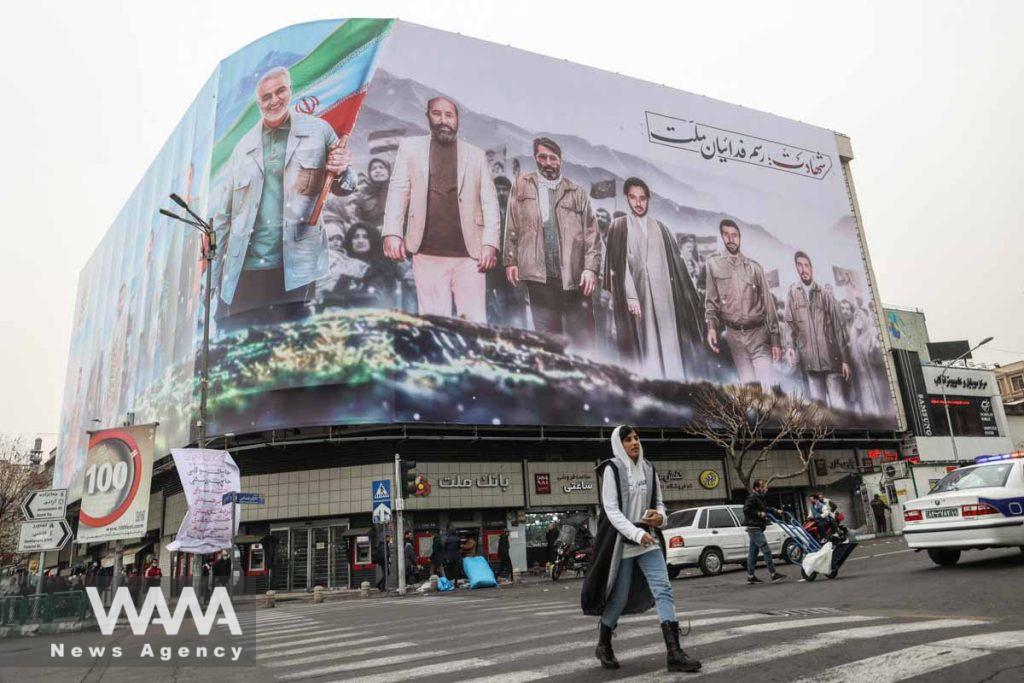
A banner with a picture of Qassem Soleimani is seen in a street in Tehran, Iran, January 5, 2023. Majid Asgaripour/WANA (West Asia News Agency)


